We all know that butterflies are beautiful since they come in different colors and sizes. These colorful creatures are also ideal for pollination among wildflowers and woodland plants. But before they transform into colorful winged adults, they are caterpillars hatched from eggs.
Identifying caterpillars that turn into butterflies can be a daunting experience among many outdoor enthusiasts. But butterfly caterpillars have specific characteristics unique from their moth counterparts.
This comprehensive guide will help you identify different types of butterfly caterpillars with pictures. The description and features will also help you differentiate different caterpillar types in your garden, park, and woodland.
How to Identify Butterfly Caterpillars
Identifying caterpillars that become butterflies is quite easy for some outdoor enthusiasts. This creepy crawlies have specific features that will allow you to know the type of butterfly it becomes in the long run. Here are quick tips for identifying butterfly caterpillars:
Body Color
Butterfly caterpillars are colorful worm-like crawling insects that appear in different shapes and sizes. They can be green, brown, yellow, or black with identifiable stripes and patterns for easy identification.
Pupae Stage
These caterpillars enter the pupae stage before turning into gorgeous butterflies. Butterfly caterpillars in the pupae stage have hard-shelled chrysalis. Besides that, these crawling creatures never pupate in the soil.
Body Appearance
Most butterfly caterpillars have smooth bodies without tufts of wispy hair. But some exotic butterfly caterpillars have spiny appearances that are scary. These fleshy spikes may or may not be poisonous since it depends on the food source.
Different Types of Butterfly Caterpillars
Caterpillars are the larval stage of moths and butterflies. But each larva has unique features for easy recognition and identification. Here is a quick list of butterfly caterpillars with their characteristics and pictures:
Monarch Butterfly Caterpillar (Danaus plexippus)
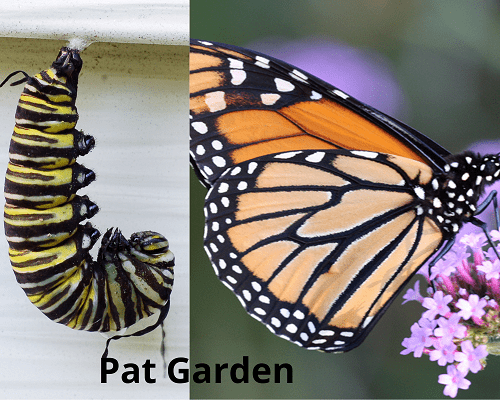
It is a striped caterpillar with each segment having a black, white, and yellow band. The long fleshy horns and two stumpy tail appendages are other identification features.
Monarch butterfly caterpillars are poisonous to birds and other predators since they feed on milkweed plants that create toxins in their bodies. (Source: University of Maine).
The black and yellow caterpillar turns into a beautiful monarch butterfly after the pupae stage. The iconic butterfly has bright orange wings with black vein-like patterns.
Queen Butterfly Caterpillar (Danaus gilippus)
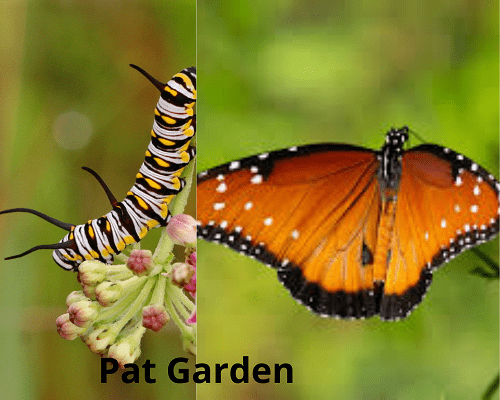
It is a black and white striped caterpillar with yellow spots on the black bands. This plump stripy caterpillar has six tentacles on its body.
Queen butterfly caterpillars have captivating color patterns like yellow, green, white, blue, and blackish brown. The caterpillar species also feed on milkweed to generate poison in its body.
The caterpillar turns into a rusty-brown or orange butterfly after completing the pupae stage. The wings have several white dots and black bands along the margin.
Zebra Longwing Butterfly Caterpillar (Heliconius charithonia)

It is a grayish-green caterpillar species with long branched spines over the entire abdomen. The body also has several black dots.
The zebra-longwing caterpillars move around on spiny black legs. These creepy crawlies love feeding on passion flower plants.
The caterpillar turns into a dark brown to black butterfly with white stripes giving it a zebra-like appearance. These butterflies usually grace our gardens or woodlands during the summer.
White Admiral Butterfly Caterpillar (Limenitis arthemis)
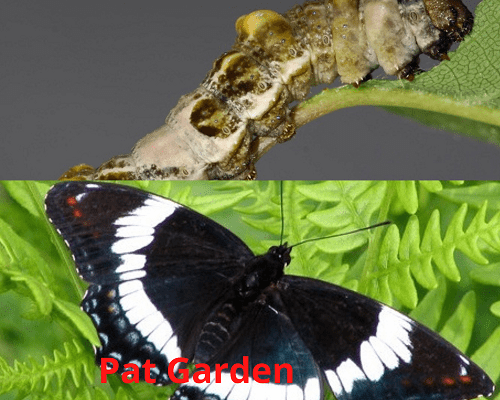
It is a type of caterpillar that looks like a bird dropping. A white admiral caterpillar has an olive-green or brown and white appearance.
The uneven shape and white blotches allow the caterpillar to camouflage itself to branches to prevent attack from predators.
White admiral caterpillars have two large and spiky horns on their heads. The caterpillar turns into a jet-black winged butterfly with prominent white bands running from top to bottom.
The large wing undersides have orange-red dots decoration. Some white admiral caterpillar species have iridescent blue wings with shades of pale orange.
Peacock Butterfly Caterpillar (Aglais io)
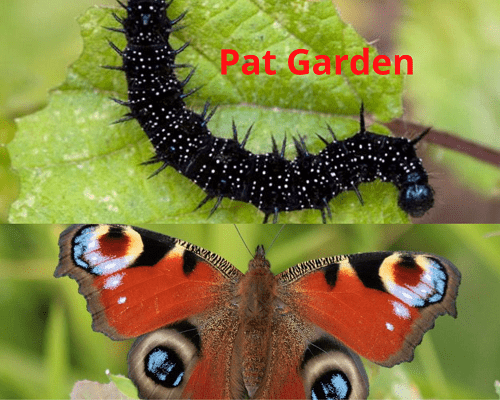
It is a long slender caterpillar with white dots and black spikes. The fleshy spines are harmless since the caterpillar does not sting or bite.
The shiny body makes it easier to identify or spot the caterpillar on the green foliage. Peacock caterpillars turn into beautiful butterflies with rusty red wings.
Each wing has a stunning blue and red eyespot in the top corners to scare away predators. The wing undersides have mottled black and dark brown patterns.
Pearl Crescent Butterfly Caterpillar (Phyciodes tharos)
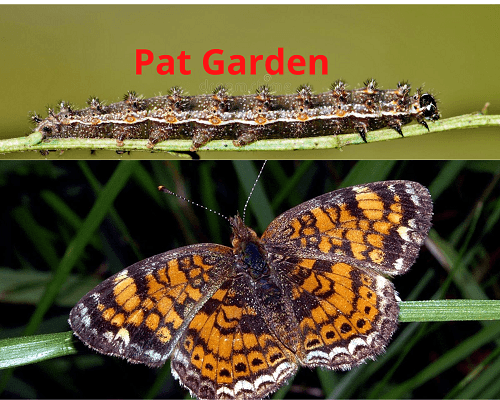
It is a spiky brown caterpillar covered in white dots and tufts of short spines. A pearl crescent caterpillar usually raises the front section in a defensive position when feels threatened.
The spiny milk coffee-colored caterpillar turns into a stunning orange and brown pearl crescent butterfly. The butterfly has rusty orange wings with conspicuous black markings or patterns.
American Painted Lady Butterfly Caterpillar (Vanessa virginiensis)
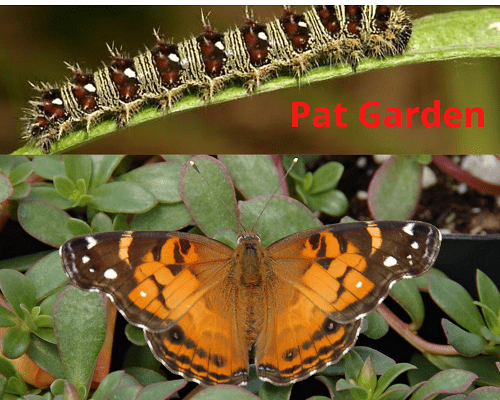
It is a spiny brown caterpillar with yellow traversing bands, and red and creamy-yellow spots on the abdomen. The caterpillar species have unusual due to the brown and yellow spots or patterns.
The yellow bands around the abdomen also have thin black lines. The spiky caterpillar turns into beautiful orange and brown butterfly.
The butterfly has four conspicuous eyespots on its underside wings and the upper side has white spots with dark brown to black markings.
Common Buckeye Butterfly Caterpillar (Junonia coenia)
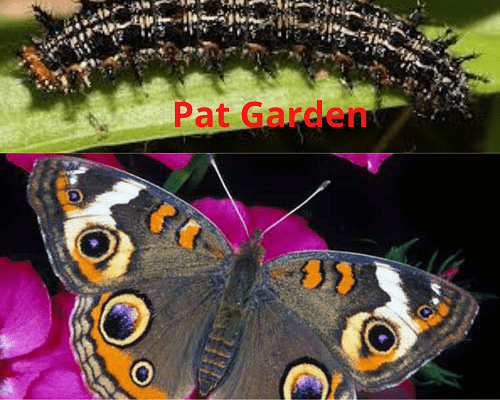
It is a black or brown caterpillar with two distinctive stripes on its back and tufts of short black spines. The spiky caterpillar also has reddish-orange and white spots.
The bulbous orange head is the butterfly caterpillar identification feature. A common buckeye caterpillar turns into a stunning brown buckeye butterfly after the pupae stage.
The brown wings have six prominent eyespots and orange markings. Each wing measures about 2-2.5 inches long.
Black Swallowtail Butterfly Caterpillar (Papilio polyxenes)
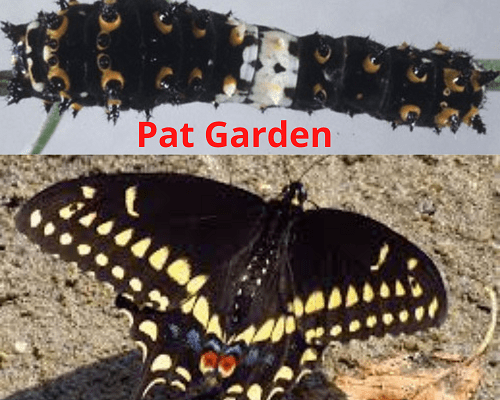
It is a large plump lime-green caterpillar with black and yellow bands on its segment. The striped caterpillar has orange forked glands that release a foul odor when threatened.
Juvenile black swallowtail caterpillars are spiky brown with broad white saddle bands around the middle segments. These caterpillars turn into attractive black swallowtail butterflies.
These butterflies have black wings with yellow, white, and blue markings. The two prominent red markings near the base make these butterflies recognizable.
Easter Tiger Swallowtail Butterfly Caterpillar (Papilio glaucus)
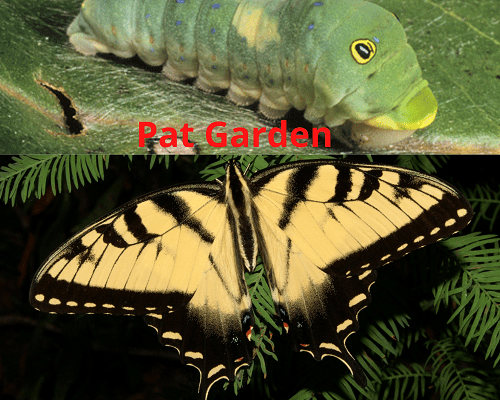
It is a dull green caterpillar with distinctive eyespots on its head. This stumpy green caterpillar has a large head and starts life brown and white.
The caterpillar appears as a bird dropping during the first three instars for defense purposes. A mature counterpart has a forked gland that emits a foul stench.
An Easter tiger swallowtail caterpillar turns into a stunning yellow butterfly with black markings along its wing after pupation.
Cabbage White Butterfly Caterpillar (Pieris rapae)
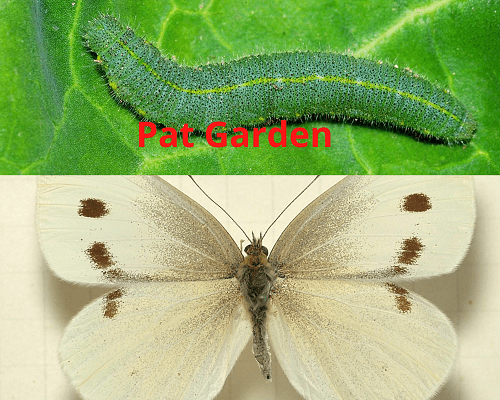
It is a slender pale green caterpillar with pale yellowish dots, a yellow longitudinal line, and fine hair covering the body. This fuzzy green caterpillar is also known as a cabbage worm.
Cabbage white caterpillars prefer hiding under the cabbage leaves. These worm-like caterpillars turn into cabbage white butterflies.
These butterflies usually have creamy-white wings with small black or brown dots. They are small black butterflies with two slender clubbed antennae.
Hackberry Emperor Butterfly Caterpillar (Asterocampa celtis)
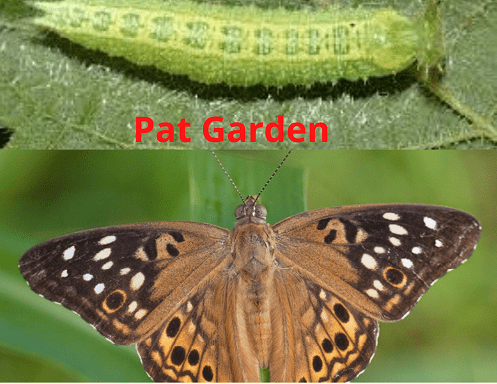
It is a broad cylindrical pale green caterpillar with yellow bands along its back. These creepy crawlies also have spiny horns on their heads, split tail ends, and tiny pale green spines.
A hackberry emperor butterfly has eye-catching dark-brown wings with black, yellow, and white spots. The underside wings have white and blue circles of black, blue, and yellow dots.
Cloudless Sulphur Butterfly Caterpillar Phoebis sennae)
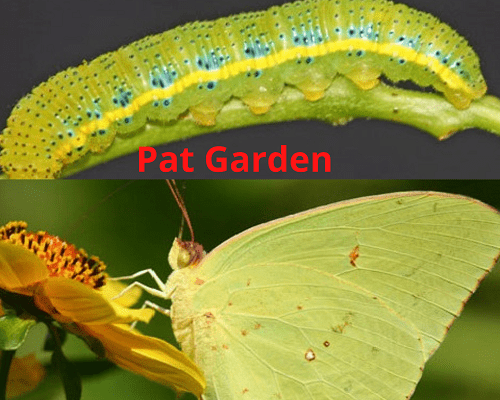
It is a stunning yellow caterpillar with a thin black line traversing its body. The golden yellow caterpillar has a smooth body without hair.
The indentations on the yellow caterpillar give it a band appearance. The juvenile counterpart has a slug-like appearance with pale to dark green color, bluish dots, and a yellow band.
The female cloudless butterfly has brownish markings and black dots on its forewings. The male counterparts have pale yellow wings and brown wings.
Passion Butterfly Caterpillar (Agraulis vanillae)
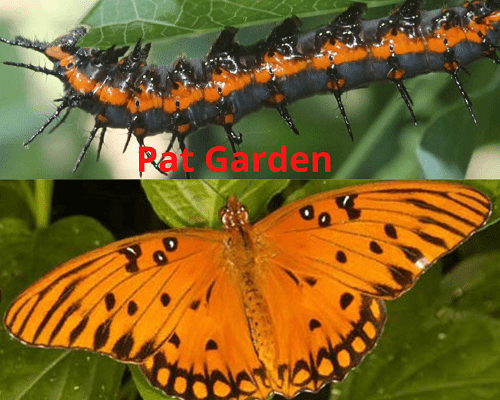
It is a type of orange and black caterpillar covered with black branched spines. It is also a slender cylindrical body with six black prolegs and six small forelegs.
The passion butterfly caterpillar has two black curved spiny horns on its head. These Florida caterpillars feed on passion plants.
The gulf fritillary butterflies are orange with brown wing markings and three white dots on their forewings. The orange butterflies love hovering around flowering plants during the summer.
Mourning Cloak Butterfly Caterpillar (Nymphalis antiopa)
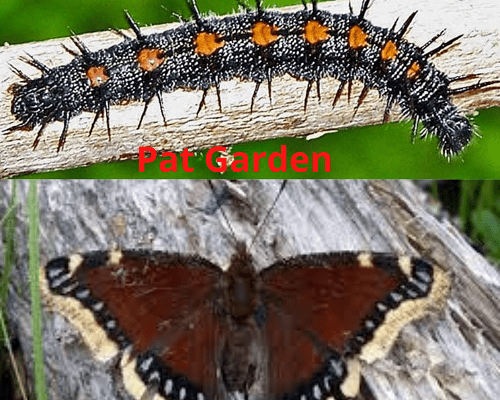
It is also known as the spiny elm caterpillar due to its sharp-looking spikes. This creepy creature has a spiny black appearance with orangey-red dots on its back.
This spiky worm-like crawlies can cause a sensational sting when handled with unprotected hands. The mourning cloak butterfly has chocolate-brown wings with golden yellow margins.
People Who Read This Also Read: